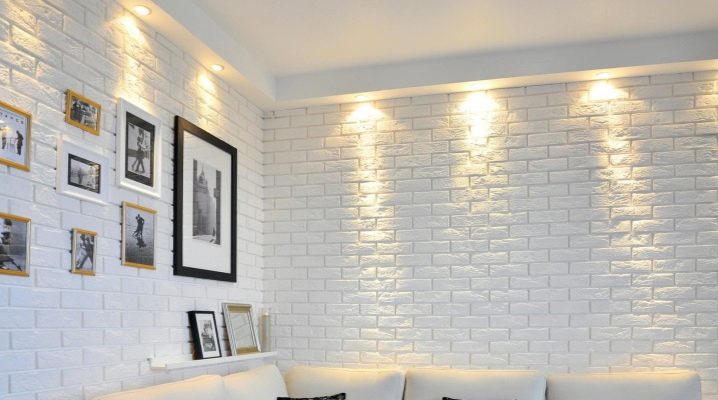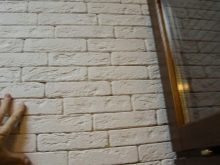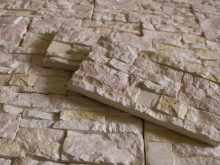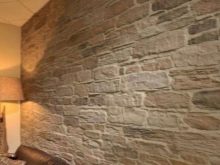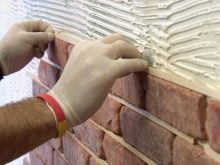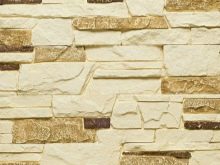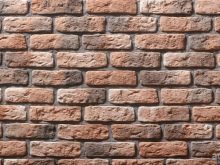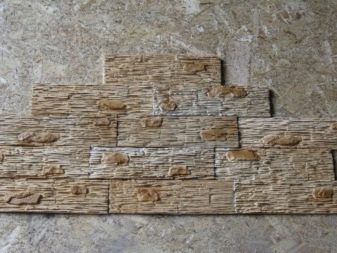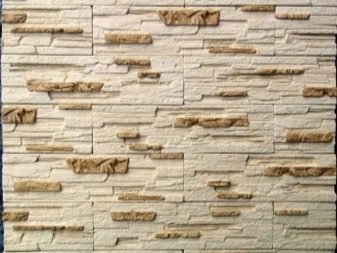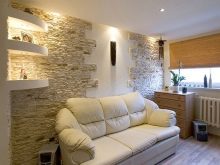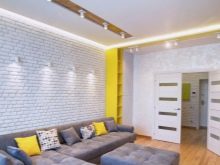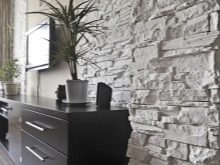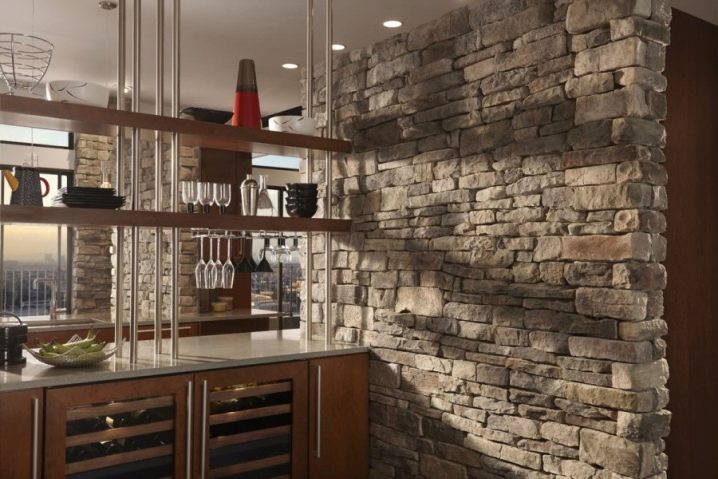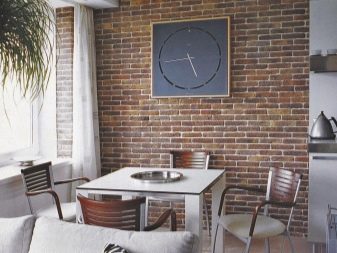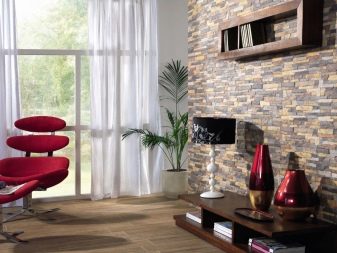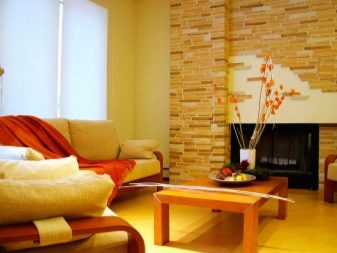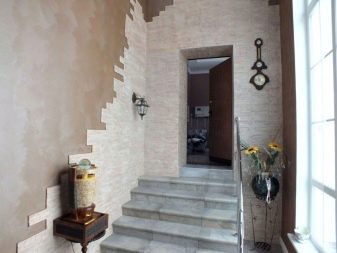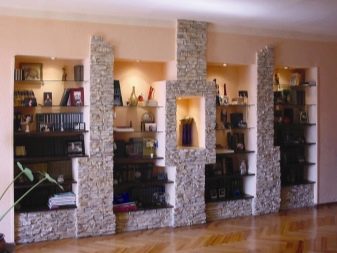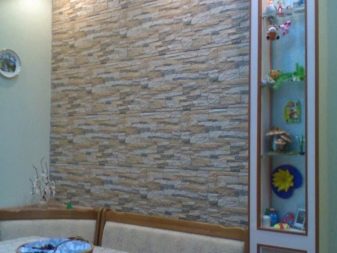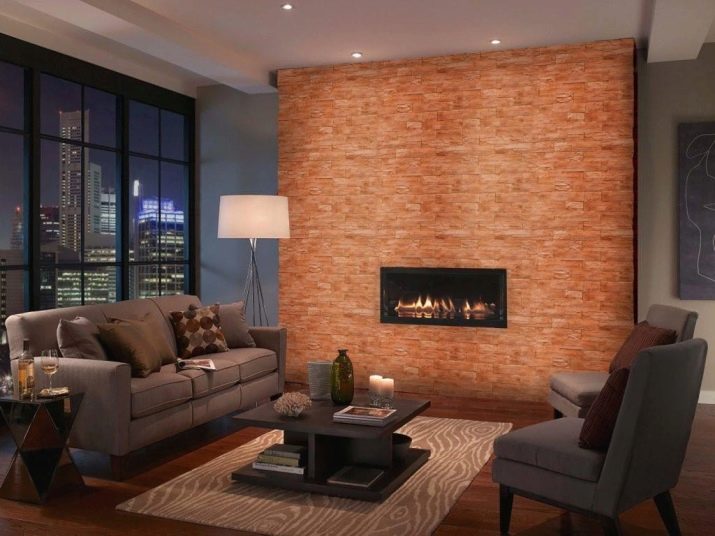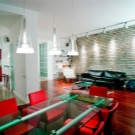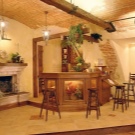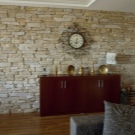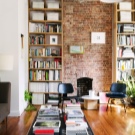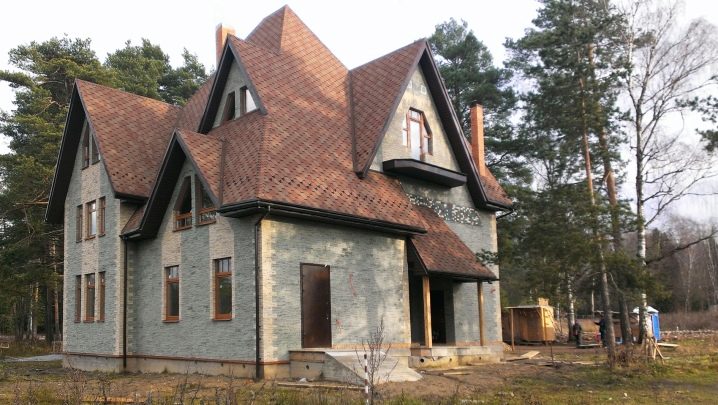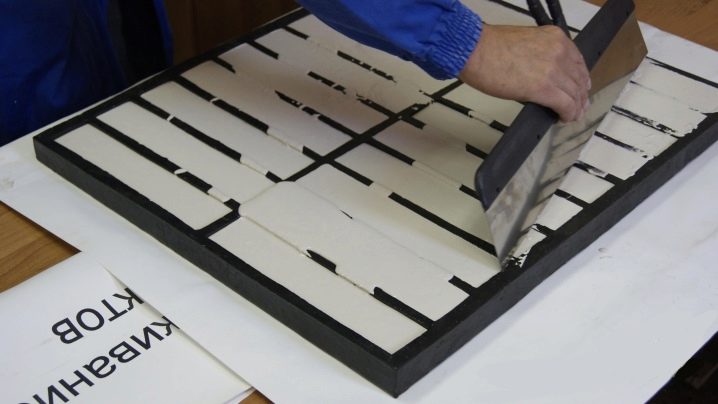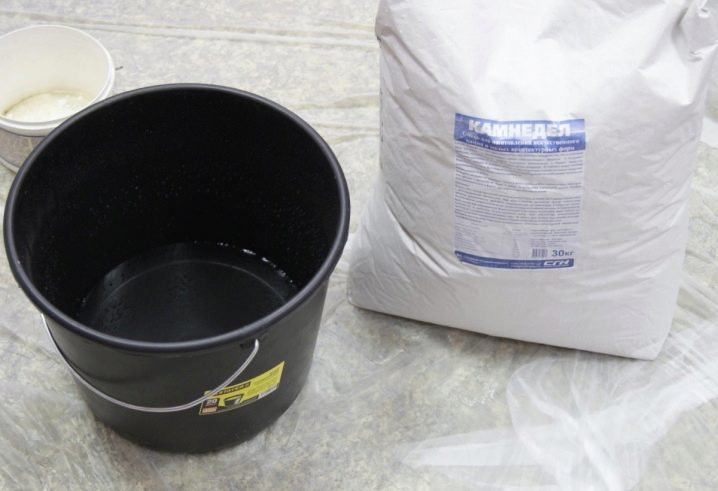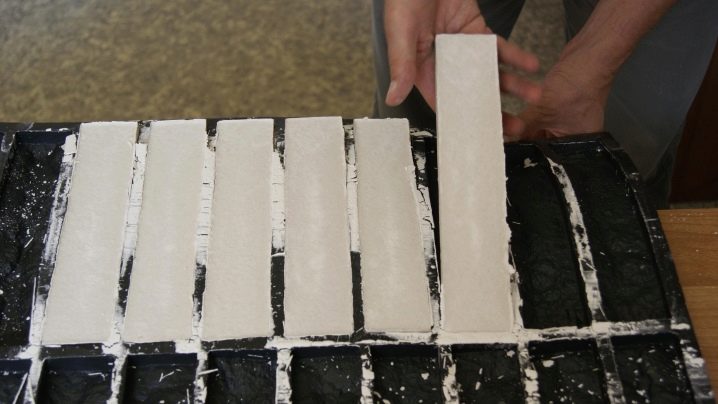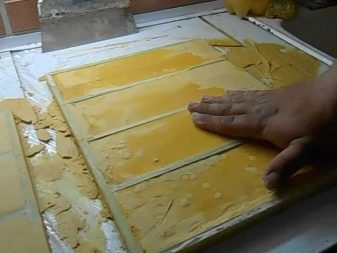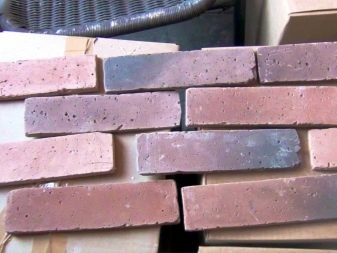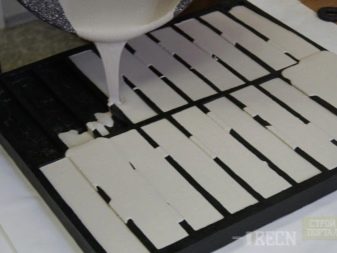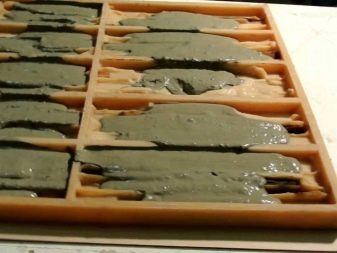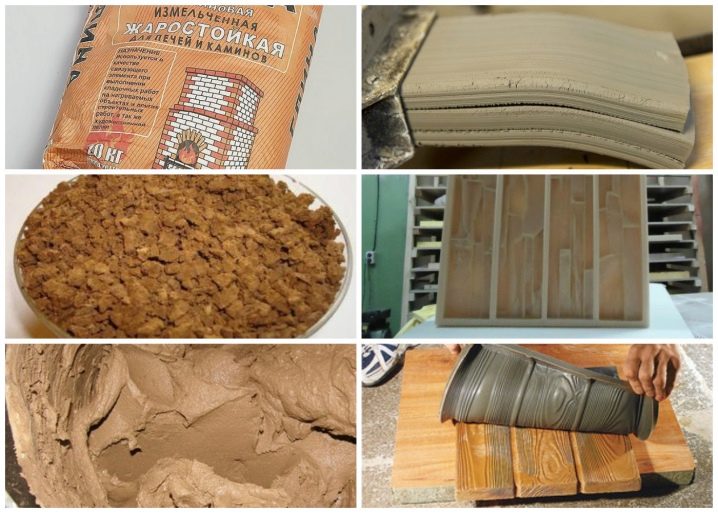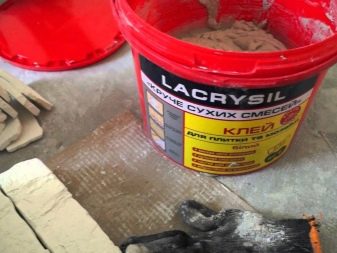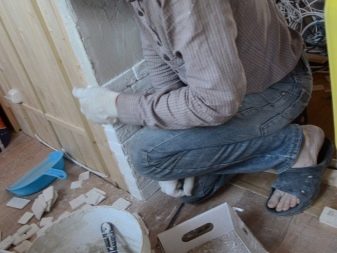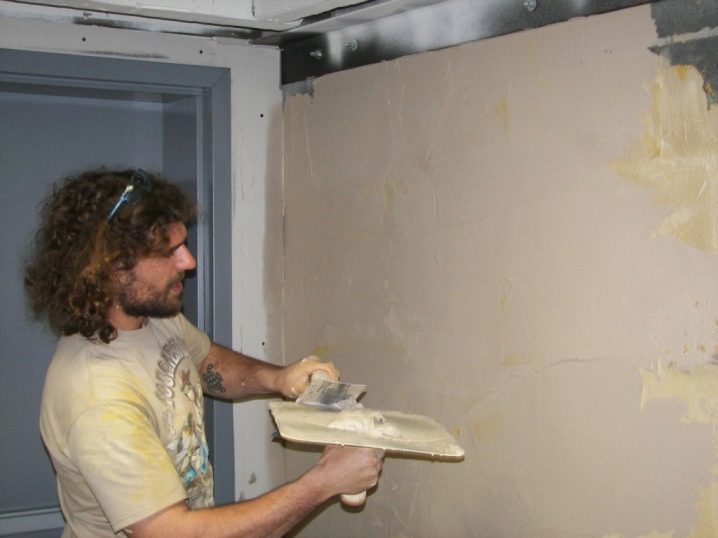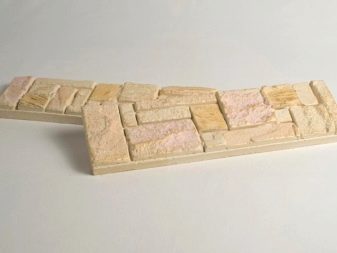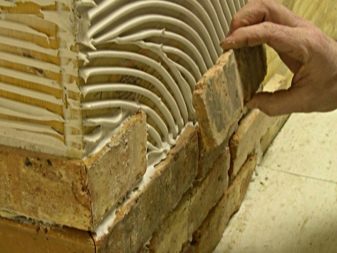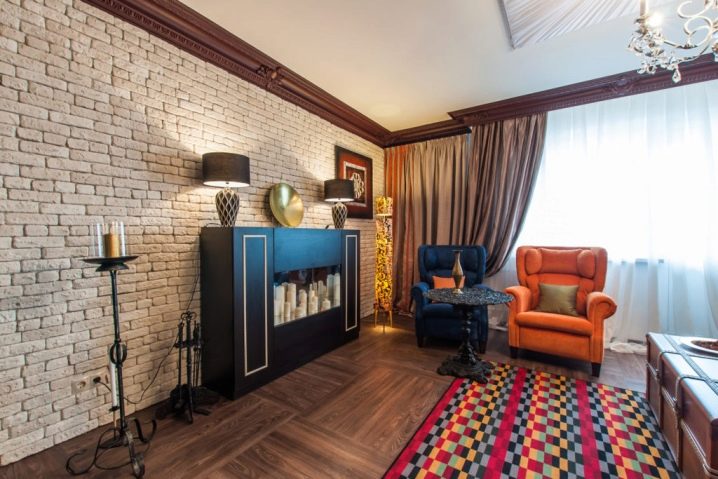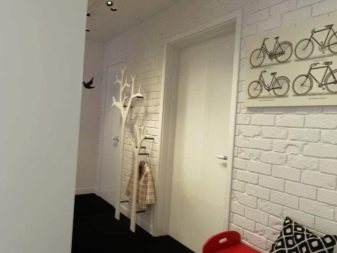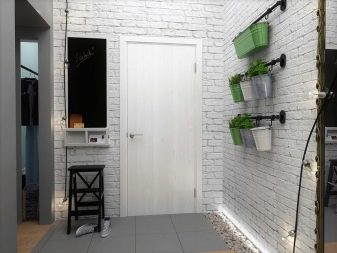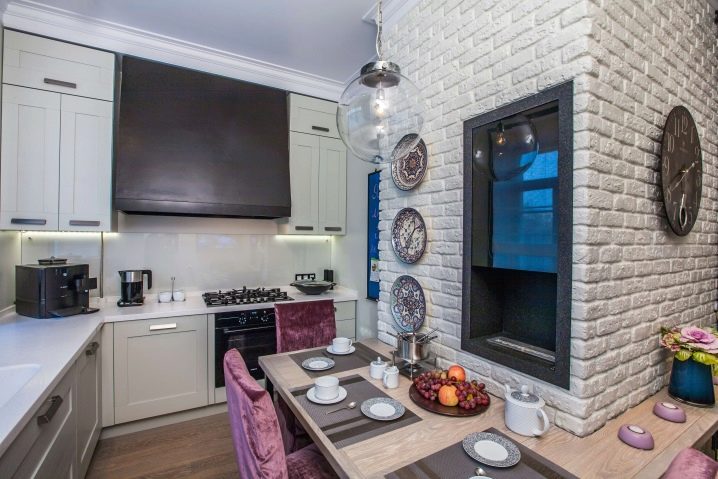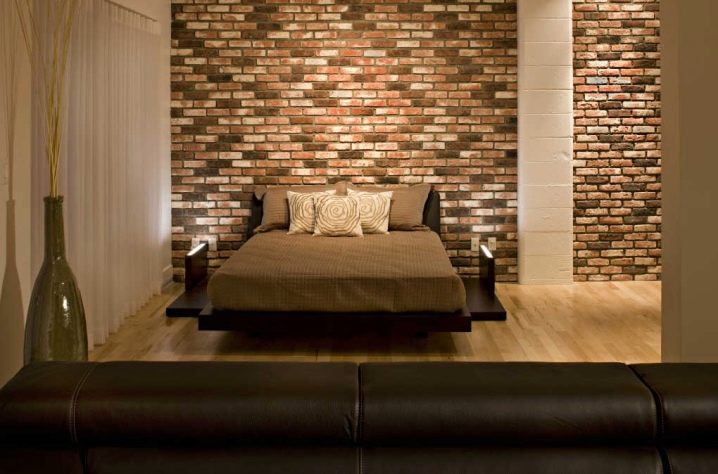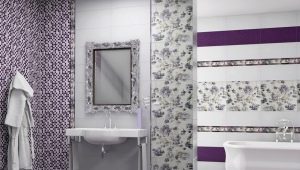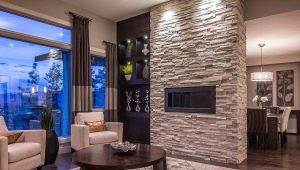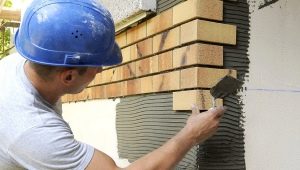Features laying gypsum tiles
The modern interior of the house provides not only a comfortable layout of the rooms, but also an original surface finish. To date, there are many building materials with which you can beautifully decorate the premises, but gypsum tile deserves special attention. It is represented by a wide choice of colors and textures with imitation of natural stone. Therefore, thanks to this decorative element, the interior takes on an expensive and sophisticated look. Most often, gypsum tiles are used for the decoration of columns, fireplaces, niches and arches, it looks beautiful in the interior of kitchens, corridors and living rooms.
Installation of tiles can be done by hand, as the material is easy to install.
Special features
Gypsum tile is considered one of the most popular finishing materials, which are made from ecological raw materials. It not only has a beautiful appearance, but also meets all operational requirements.Therefore, wall and ceiling cladding can be performed in any rooms, except for rooms with high humidity and high temperatures. It is not recommended to use the material for finishing of bathrooms and saunas, as it will collapse under the influence of a non-standard microclimate.
The main advantages of gypsum tiles include:
- Naturalness Unlike decorative elements made of concrete or ceramics, the material does not have any impurities harmful to human health. For its production use exclusively the binding components from plaster.
- Good heat and noise insulation.
- Aesthetics.
- Nonflammability and fire resistance. Thanks to these features, the product is great for lining furnaces.
- Unique structure. The material maintains a favorable microclimate in the rooms. Its production is carried out according to special technologies using molecular compaction; therefore, the product is durable and reliably withstands any mechanical loads.
- Easy to care. To clean the surface of the tile can be used both dry and wet cleaning.The only thing that is not recommended: clean the material with rigid brushes and detergents containing a concentrated chemical composition. To extend the life of the decorative finish, it is covered with a special varnish or impregnation, after which the structure of the pattern is maintained for a long time, and the tile itself becomes resistant to dirt.
- Low weight. Gypsum tile is much lighter than natural stone, so when you install it, you do not need to additionally strengthen the walls, which saves time and money.
- Possibility of installation on all types of surfaces. The material is ideal for cladding plasterboard, brick and concrete foundations.
- Easy installation. Fastening of decorative elements is carried out with the help of special glue or cement-based solutions. To prepare the tiles for facing, it is enough to perform its sorting and adjust the required size.
- Affordable price. Finishing material is represented on the construction market by both domestic and foreign manufacturers. Therefore, it will not be difficult to choose the desired tile model that would combine high quality and average cost.
- Huge selection of colors, textures and sizes.
Based on the above, we can say that the gypsum tile is the perfect finishing material, thanks to which you can make the design of a house or apartment fashionable and beautiful. Therefore, in recent times in the modern interior often found walls and ceilings, decorated with this element of the decor. It is also worth noting that the tile fits well with the overall decor of the room and furniture, filling the space with comfort and homely warmth.
In addition, the relief surface of the material looks perfect in all stylistic directions, ranging from classic to modern.
Scope of application
The use of gypsum tiles in the design of housing is limitless. Most often, it is chosen to decorate the walls in living rooms and passers-by. An interesting option is also considered decorative decoration under a brick or stone, which can cover the empty surface in the room, niches, as well as working walls in kitchens. The most popular type of tile application is facing of a fireplace, it gives a design refinement and copes well with thermal insulation.
Recently, pilasters and columns have been installed in the design of rooms.so that such constructions harmoniously fit into the overall decor of the space, stylists recommend decorating them with gypsum tiles with imitation of stone or brick. This material also looks good on the ventilation boxes of the kitchen, it visually reduces the size of the structure and makes it a real decoration.
To separately emphasize the texture and color of the tile, its laying can be combined with plain wallpaper, choosing for this a range of calm colors.
To decorate the walls in the living room, it is important to provide for good lighting.as the “stone” decoration will look spectacular only with bright illumination from above and from the side, besides, the use of the material depends on the size and shape of the room. The dark colors of the tile will narrow the space, and light colors, on the contrary, will visually increase the room. Therefore, making out an interior in living rooms, it is necessary to select decorative elements of warm shades, preferring red, brown and beige color. If the design requires "coolness", then you can install separate fragments of plaster tiles of gray or light blue in the room.Elegant finish will be in the bedroom, if it is done in white.
In addition, gypsum materials are also widely used in the external cladding of facades; they, just like the clinker tiles, are characterized by strength and endurance. It looks interesting this type of finish on the balconies or loggias.
How to do it yourself?
Gypsum tiles are usually manufactured by the production method, but there is also a technology by which it can be made independently. To do this, it is necessary to prepare a special room, equipping it in such a way as to maintain a constant temperature and humidity.
For self-production you will need:
- gypsum;
- forms;
- capacity for preparation of solution;
- acrylic lacquer;
- color schemes;
- spatula and brush.
Before you start manufacturing, you need to choose the right raw materials. It is recommended to give preference to gypsum brand G10, it is considered the highest quality. Additionally, you will also need to purchase plasticizers in the form of citric acid or slaked lime. For independent production of decorative tiles, it is important to choose its matrix.Silicone and polyurethane matrices are distinguished, while the former are cheaper and can only be used for gypsum mixes, while the latter are considered universal.
For the manufacture of plates you need several types of forms, therefore, to save on the purchase, it is recommended to do them yourself.
This process is not considered difficult and will take only one day. A stone sample is used as a basis and a matrix is calculated and prepared for it. After it is completely dry, pour polyurethane and get the desired product.
Prior to filling, the dies are thoroughly cleaned and lubricated with mixtures containing fat. To prepare the solution, take 6 parts of gypsum, 1 part lime, color and clean water (in the ratio 1: 0.7). Since gypsum has the ability to instantly harden, the solution must be prepared quickly, stirring all the components with the help of a construction mixer. The mixture is poured into molds and leveled with a spatula. It is worth noting that the mixture is prepared only for the required number of forms, it can not be prepared with a margin, because it will become solid and unsuitable for further use.
It is not recommended to add cement to the gypsum mixture, as it may increase the risk of fungus and mold formation on the tile surface during its operation.
All cast forms set on a flat surface and leave for 20 minutes to set. Full drying takes about a day and should take place in a dry room. It is also important to check that after pouring the matrix the solution is evenly distributed, without air bubbles on the surface, otherwise the product may turn out to be defective.
When the plaster dries out, it is removed and left to dry further. Products from the matrix must be removed carefully, without disturbing their integral structure. In order to speed up the drying process, it is recommended to place the future tile in the drying chambers, while avoiding direct sunlight.
Initially, the gypsum tile is obtained in white, therefore, if its decoration provides for color decoration, the product must be painted. As coloring solutions, as a rule, use dry mixtures that dissolve in liquid colors.
Painting can be done in the following ways:
- Add dyes to the solution immediately before pouring forms. The result is a beautiful and homogeneous mixture.
- Shade the matrix from the inside. Thus the tile will get a natural look.
- Prepare the staining solution and apply it to the surface of the material with a sprayer. Then the product should be additionally coated with acrylic varnish.
Preparation for laying
Gypsum tiles need to be laid correctly, since not only the aesthetic appearance of the decorative facing will depend on the technology of work, but also the life of the material. The product is universal, and it can be mounted on plaster, concrete, brick or sheets of drywall, provided that the surface of the base is flat and free from defects. If the walls or ceiling are covered with old finish, on which cracks and hillocks have formed, then the old coating must be removed and thoroughly cleaned. Then prepare the putty, and put its mixture on the surface.
If the base defects are significant, it should be thoroughly treated with a primer.after which the cement mortar is made, with which all the cracks are filled. Then the surface must be re-primed and dried. Primer treatment is needed in order to improve the adhesion between the tile and the wall. At the same time, its composition should be chosen special, containing components that prevent the appearance of fungus and mold.
It is desirable to carry out priming in several layers, such a surface, although it dries for a long time, but then is considered well prepared for the installation of tiles.
Installation
In the modern interior of the rooms, gypsum tiles, imitating natural stone or brick, are most often used. To perform the decorative trim yourself, you must first select the layout tile and prepare the solution. It is important to pay attention to the reverse side of the material. If its surface has a relief surface, then the glue should be put with an even trowel, and if even, then serrated.
The technology works as follows:
- An adhesive solution is applied on a pre-prepared wall with a thin layer. It is distributed over the base so that 4-5 plates can be laid. Decorative cladding can be laid on plasterboard and putty.
- Glue the back side of the tile.
- Plaster elements pressed against the wall and adjust their location. To align seams, it is recommended to use spacers.
- Finishing is carried out in rows, each of which should be shifted to half the tiles.Lining is carried out to the corners of the room, after which immediately remove all residual solution at the joints.
Drying the walls takes less than a day and requires constant humidity and temperature in the room. The final stage in the laying of gypsum tiles is considered its decor. For this, the seams between the elements are filled with a special mortar, the shade of which fits under the brick.
Design examples in the interior
Gypsum tile imitating natural stone or brick is great for decorating living rooms. This decorative material can decorate not only columns and partitions, but the main wall in the room. At the same time, the tile of white color looks unusual in the living room, it is originally combined with the ceiling of the room. In order for the color palette to create an interesting contrast, it is additionally recommended to install good lighting in the room, otherwise in the living room instead of coziness and warmth a feeling of cold and gloom will be created. The original idea can also be tiled fireplace.
As for the hallways, their area is always small, so for finishing it is also best to choose tiles of light shades, they will visually expand the space and make it brighter.
In the kitchen there are many options for lining, but the most original is the placement of decorative trim on the wall near the tabletop. You can also use the material to decorate the bar, hood or working wall near the sink, but in this case, the tile must be further treated with varnish to protect its surface from moisture. It is worth noting that the kitchen with white stone lining looks stylish and elegant.
Special attention deserves the design of the bedroom. In order to always be cozy and warm in this room, it is recommended to install a plaster tile under a brick of two shades. At the same time installation can be performed both near the bed and on the wall opposite to the sleeping place. Often in the interior of the bedrooms there are also decorative inserts from white tiles, they allow you to create a sense of romance in the room.
All the nuances of laying plaster tiles under the brick can be viewed in the video below.
